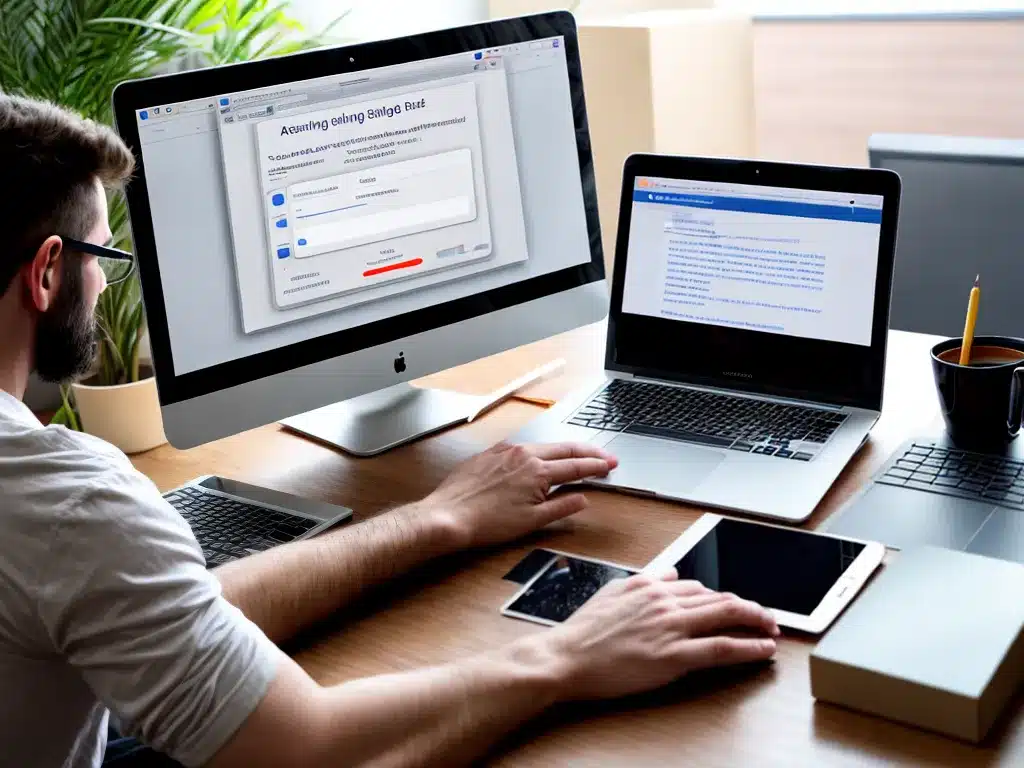Staying Secure While Working Remotely
Use Strong Passwords
Passwords are the first line of defense for your devices and online accounts. When working remotely, strong passwords are especially important to keep your data safe. Here are some tips for creating secure passwords:
-
Use a unique password for every account. Reusing passwords across multiple sites leaves you vulnerable if one site gets hacked.
-
Opt for long passwords, at least 12 characters or longer. The greater length makes passwords harder to crack.
-
Include a mix of uppercase and lowercase letters, numbers, and symbols. This complexity enhances password strength.
-
Avoid personal information like your name, birthday, or dictionary words. Hackers can easily guess passwords using such data.
-
Use a passphrase for greater security. A passphrase is a long string of words that is easy to remember but hard to crack. For example: “balloonPickleTromboneHockey17”
-
Change passwords regularly, such as every 90 days. This limits the damage if a password does get compromised.
-
Use a password manager like LastPass or 1Password to generate and store passwords securely. This lets you use unique, complex passwords without having to remember them all.
Use a VPN for Public Networks
When connecting to public Wi-Fi networks, such as in coffee shops or airports, it’s important to use a Virtual Private Network (VPN). A VPN encrypts your internet traffic and hides your IP address. This prevents snoops on the public network from accessing your data.
Some top VPN providers to consider include NordVPN, ExpressVPN, and TunnelBear. VPN services are affordable, easy to set up, and provide vital security on open networks.
Keep Software Updated
Outdated software and operating systems frequently have vulnerabilities that hackers can exploit. When working remotely, be diligent about applying software updates whenever they become available.
This includes updates for your:
-
Operating system – Install Windows, MacOS, or Linux updates promptly.
-
Web browser – Chrome, Firefox, Safari, and others issue frequent security patches.
-
Virtual private network (VPN) – VPN apps need to stay up-to-date to safeguard your traffic.
-
Other applications – Productivity software, Adobe products, Zoom, Slack, and more require regular updates.
Enabling automatic updates makes this seamless. If not, periodically check for and install updates yourself. Keeping software current is vital for security.
Use Antivirus and Firewall Software
Antivirus software detects and blocks malware like viruses, ransomware, and spyware. It provides essential protection against modern cyberthreats. Leading antivirus programs include Norton, McAfee, and Avast.
A firewall monitors network traffic and blocks unauthorized access attempts. Personal firewalls are built into Windows and MacOS. For enhanced protection, use a third-party firewall from ZoneAlarm, GlassWire, or similar providers.
Together, antivirus and firewall software form a robust defense against infiltrations for remote workers. Schedule regular scans to verify your systems remain malware-free.
Secure Home Routers
Your home Wi-Fi router is the gateway to your network. When working from home, take steps to lock down your router:
-
Change the default admin password to something unique and strong.
-
Disable remote administration unless absolutely required.
-
Use WPA2 or WPA3 encryption for Wi-Fi security protocols.
-
Enable your router’s built-in firewall.
-
Disable WPS, if your router offers Wi-Fi Protected Setup.
-
Update the router firmware when new versions are available.
Also consider using a guest network for untrusted devices. A compromised guest device can’t access other devices on your home network. Securing routers protects your local network perimeter.
Beware of Phishing Scams
Cybercriminals frequently use phishing scams to steal login credentials and infect systems. Phishing employs fraudulent emails, sites, and ads masquerading as trustworthy entities.
When working remotely:
-
Avoid clicking links or opening attachments in unsolicited emails.
-
Double check the sender address of suspicious emails. Scammers often spoof legitimate business domains.
-
Only visit sites by manually typing the URL or using saved bookmarks.
-
If an offer seems too good to be true, it probably is. Use caution with online promotions.
-
Monitor accounts for unauthorized access or activity, which could indicate compromised credentials.
Staying alert for phishing helps keep your accounts and network protected.
Practice Safe Browsing
Your web browsing activity can expose you to threats. Practice safe browsing habits:
-
Avoid illegal streaming sites. They are infested with malware.
-
Don’t torrent. Illegal file sharing is risky.
-
Check HTTPS. Websites should use SSL encryption, denoted by https:// in the URL.
-
Delete cookies and history periodically to remove browsing artifacts.
-
Use an ad blocker like uBlock Origin to avoid malicious ads.
-
Disable unwanted browser extensions. Only keep what you need.
Safe browsing hardens your systems against web-based attacks. Be choosy about where you visit and what you click.
By taking the right precautions, remote workers can stay productive and secure. Strong passwords, VPNs, antivirus tools, system updates, and safe browsing practices go a long way in protecting data and devices. Be vigilant and follow cybersecurity best practices.












